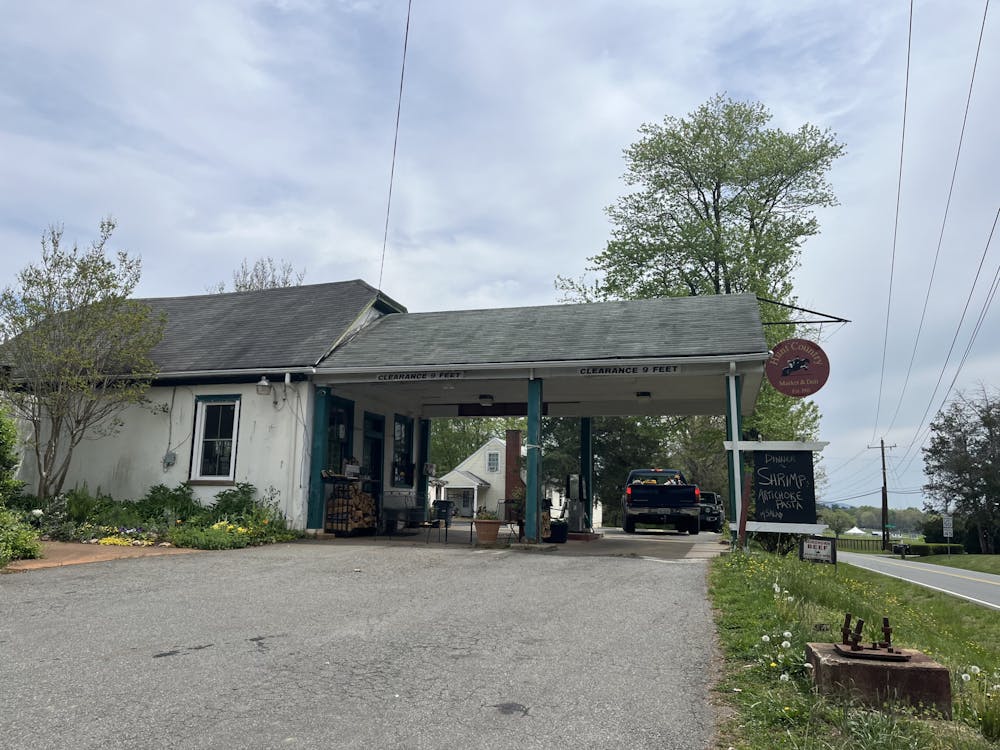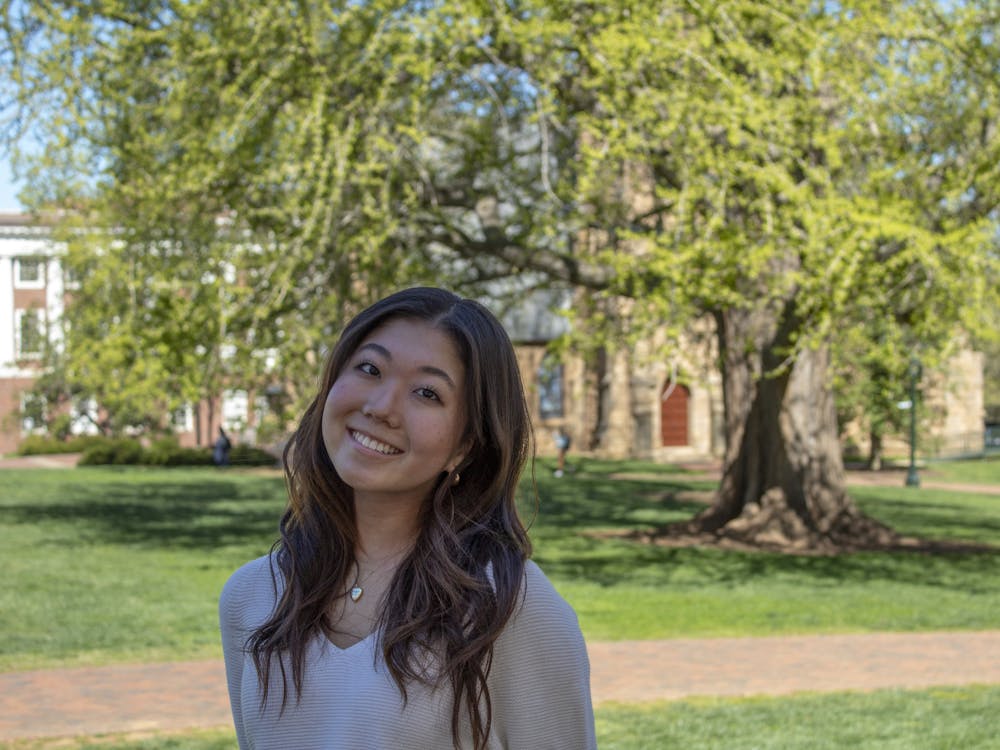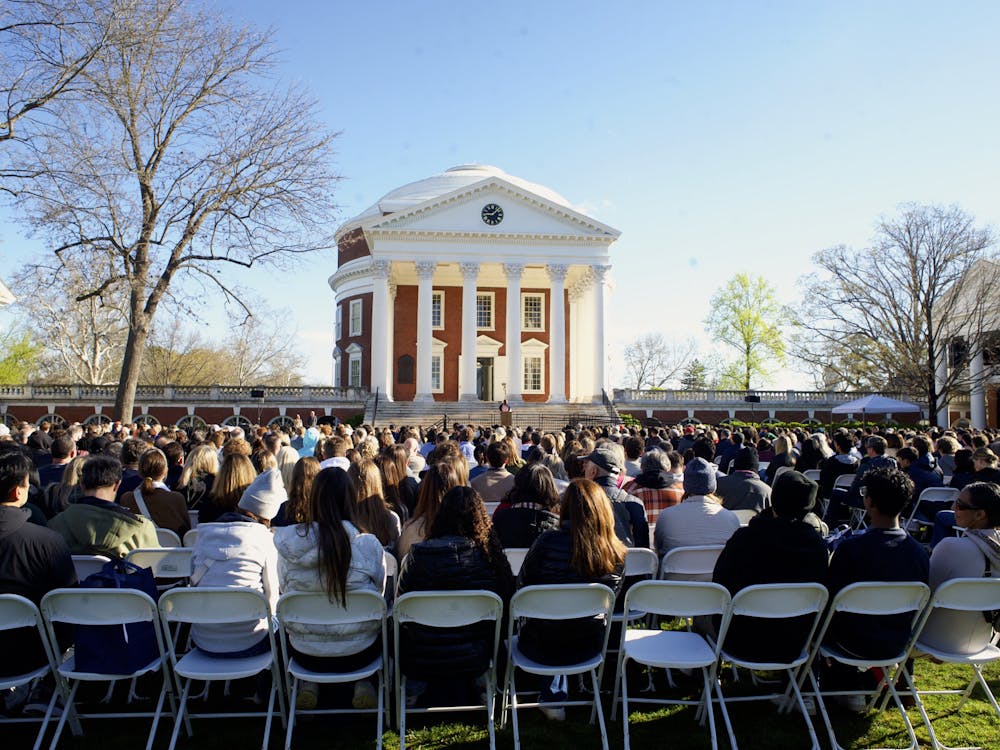Seven years ago, Jon Gottshall began to document an odyssey, one that brought him to the brink of where intellect meets instinct, where tame meets wild.
While pursuing a master's degree in history at California State University-Fullerton, Gottshall traveled to various colleges to complete his research. When he had downtime, he watched squirrels.
Then he wrote about it.
So began, in 1995, "The Campus Squirrel Listings" on Gottshall's Web site, aptly titled "Jon's World o' Squirrels."
Here, schools earn a rating based on the size, health and friendliness of their squirrel populations.
"I tried to give them sort of a uniform ranking for different parts of the country," said Gottshall, who works in the archives at the Los Angeles Times.
One squirrel means "worst," while five squirrels means "best."
Gottshall relies on students and other squirrel enthusiasts to submit their observations and lore, which he uses to assign the ratings. One Web site user, "Jennifer," earned William & Mary a three-squirrel rating with her description of the college as "an excellent place to watch squirrels."
University of California-Berkeley sweeps the list with a five-squirrel rating, one of the highest of the 93 documented schools.
How does U.Va. compare? Right now, it doesn't. The University isn't rated. It isn't even listed.
The best of the best
Mary Baldwin College in Staunton is home to more than 2,000 students. And lots o' squirrels.
"Oh, we have tons," said Morgan Smith, assistant director of college relations. "Almost every single tree on campus has a squirrel."
Mary Baldwin is one of eight five-squirrel schools on the list. Smith said the college's squirrels are laid back. They'll sniff around people eating outdoors, but they won't aggressively beg for food, "not like park squirrels," she added.
What seems to push Mary Baldwin into the upper echelon of the rating systems is the school's mascot: Gladys the squirrel.
In 1978, the college adopted the Baldwin family crest, which happened to have a squirrel on it.
"Hard to beat that," Gottshall said.
Just as University students are Cavaliers, Mary Baldwin students became the Fighting Squirrels. Gladys comes to sporting events. Every year, student organizations sell T-shirts with squirrels on them.
"We embrace our squirrel heritage," Smith said.
Even for a school without such a richly documented squirrel legacy, it's possible to attain an impressive rating from Gottshall.
Rice University's vice president for public affairs, Terry Shepard, proved this when he earned his school five squirrels last May.
Shepard said he heard about the site from the editor of the school newspaper. After visiting it, he thought to himself, "actually, we belong here."
Shepard submitted an exclamation point-punctuated rave of Rice's squirrel devotion, citing as evidence the campus directory cover, which featured a photograph of a squirrel.
"Visit Rice and we are confident that you, an objective expert, will conclude that there is no campus squirrellier than Rice's!" Shepard wrote to Gottshall.
Shepard said he was pleased with the honor bestowed upon his school.
"Hey, better to have a five-squirrel rating than a no-squirrel rating," he said.
A checkered record
The University community's relationship with squirrels is not entirely rosy. Anecdotal evidence that dates back to the 1950s suggests antagonism on both sides of the furry divide.
Class of 1955 alumnus Alexander "Sandy" Gilliam Jr., now Secretary to the Board of Visitors, remembers a recurring incident from his undergraduate days.
Gilliam says that some of his fraternity brothers used to take a geology class in Brooks Hall with a notoriously ornery professor. The professor had no tolerance for little fluff balls that liked to perch on the classroom windowsill.
"He would pull a loaded shotgun out of his desk and blast away," Gilliam says he was told by friends. "There was a more relaxed attitude in those days toward weapons."
Times have changed, but it seems some people's attitudes toward squirrels haven't.
Third-year College student Robert Dale reported that his girlfriend rushes at squirrels "to get them used to being scared of humans again."
Fourth-year College student Susan Daughtry said her boyfriend, who graduated last year, likes to hunt squirrels in Northern Virginia. But she doesn't allow him to shoot the critters here.
"I'm not really pro-squirrel rights, but I don't want to see these squirrels killed in front of me," Daughtry said. "I'm not above eating squirrel, though."
As fourth-year College student Duncan Brook will tell you, squirrels aren't always the victims. Sometimes they're the attackers.
Brook was headed for a luncheon one day during his first year. Running a little late, a dressed-up Brook was passing by the clump of bushes in front of Gilmer Hall.
"All of a sudden, out of nowhere, comes this big, dark blur," Brook recalled.
He thought it was a cat.
He thought wrong.
The creature had latched onto Brook's leg. It took him three large kicks before the squirrel finally went "flying off my leg in this parabolic arc."
Brook said it's a "definite possibility" that the same squirrel stole a strawberry from him when he was studying in the Gardens his second year. The Honor Committee member said squirrels should be held to the same standards as students.
"If they're going to steal my strawberries, I want them gone," he said.
The Bold and the Bushy
The squirrels might be brazen, but it's because the University treats them well, said Scott Burns, the landscape supervisor for Central Grounds.
"They'll come right up to you, I think mostly because no one ever harms them," Burns said.
Indeed, Gottshall says that squirrels' willingness to approach people is a sign of an involved student body. That's one of the reasons why Berkeley, with its "active and liberal-minded" students, scores so high in the ratings, Gottshall explained.
Third-Year Council has embraced, if not exalted, the squirrels' unabashed behavior around Grounds. Last spring, the council's executive members voted to use squirrels as Class of 2004 mascots.
Third-Year Council President Howard Yuan said, "I think they have a reputation of being fearless."
"Much like our class -- fierce," added council representative Jon Powell.
"Earl" and "Pearl," two bushy-tailed, buck-toothed characters, grace the class calendar, cups and magnets.
Squirrels might be gaining higher status on Grounds, but "squirrels have always been a unique part of this place," said Pat Lampkin, vice president of student affairs. "They feel like they're part of Grounds."
Both Lampkin and Gilliam agree that the University deserves a rating.
"I hope we get on the map for the squirrels," Lampkin said.
Burns voices a particularly strong opinion when it comes to the University's squirrel standings.
He said the squirrels are "friendly" and "very, very healthy."
The biggest problem his landscape crew has with them is when squirrels transplant nuts. Or, "when they get run over by cars and landscapers have to go and pick them up."
Burns, who graduated from the University in 1975, noted another rankings sting: U.Va. didn't make it into a list of the country's top 10 party schools "like we did in the 70s."
He has hope, though, that "maybe we can get to the top of the squirrel ratings."




